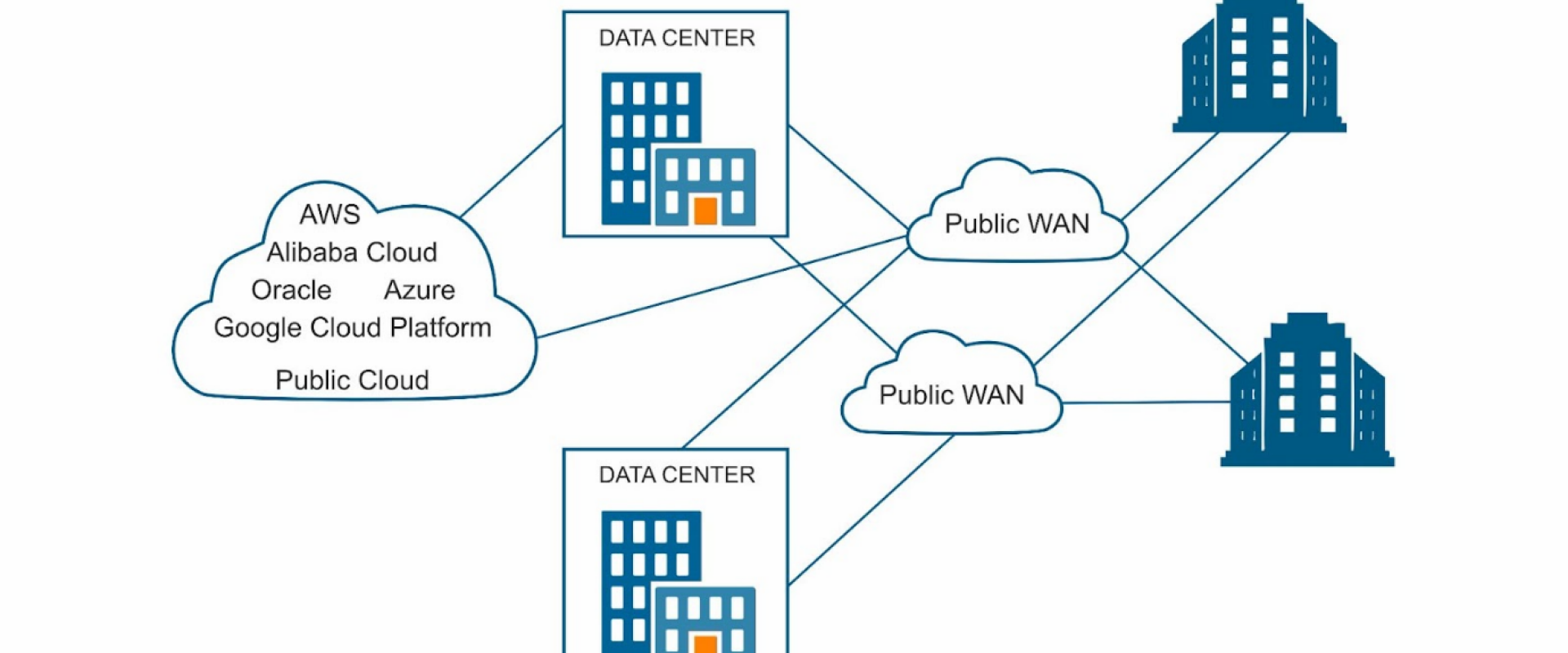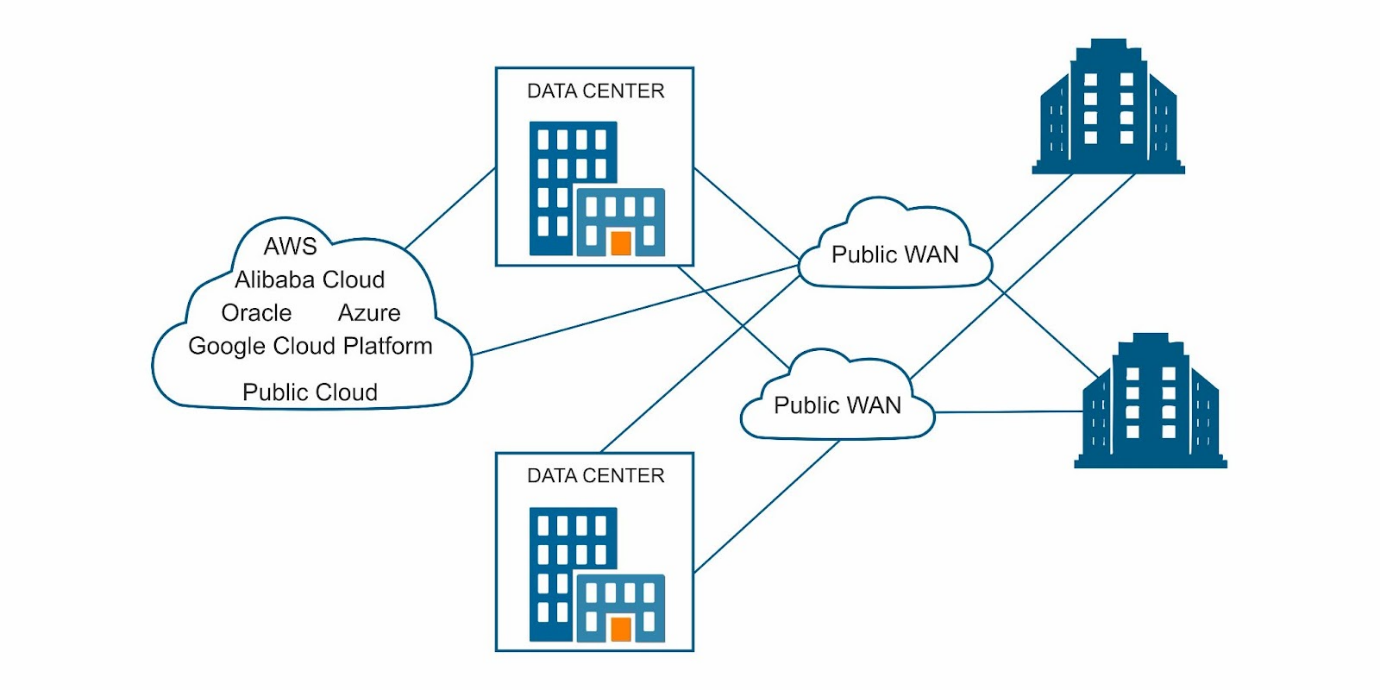Is Multi-Cloud Infrastructure the Future of Enterprises?

Why and how multi-cloud infrastructure benefits enterprise and considered as the future of enterprises.
Cloud services from multiple vendors would allow business enterprises to access best-in-breed services and technologies. According to the data published by Faction, about 92% of companies have already switched to a multi-cloud environment and 82% of the large business entities adapted to hybrid cloud infrastructure. This clearly shows the influence of multi-cloud strategy in the business world.
Multi-cloud infrastructure plays a key role in improving the IT infrastructure of an organization which leads to experiencing huge benefits. Adapting to the multi-cloud infrastructure would enable businesses to meet the business needs and expectations of modern consumers according to the market condition.
What Is Multi-Cloud?
Multi-cloud is nothing but a deployment model of more than one cloud service from different vendors at a time. The infrastructure offered by multi-cloud enables business entities to deliver seamless application services to their consumers by leveraging the benefits of two or more private or public cloud services.

Why Do Organizations Choose a Multi-Cloud Strategy?
Several top-level business enterprises are moving toward multi-cloud infrastructure to make use of the advantages of different cloud services simultaneously. Also, the multi-cloud infrastructure allows businesses to take full control over their applications and data, which is important for their business success.
Here are the key reasons that force business entities to switch to multi-cloud infrastructure:
· Real-time monitoring of applications
· Ability to scale deployments according to demands
· Cost savings and flexibility in IT services
· Delivers better results through collaboration
Let’s take a look over the challenges involved in adapting to multi-cloud before going deeper into the benefits part.
Here Are Some of the Biggest Challenges of Going Multi-Cloud
Before going toward a multi-cloud approach, make sure you are aware of these upcoming common challenges your business may face and find a suitable solution to tackle those.
· Cloud governance: Companies need to have desired rules and constraints to avoid financial irresponsibility and construction mess by engineers/architects in multi-cloud infrastructure. It is important to create minimum viable cloud governance that defines necessary guidelines for engineers to work.
· Interoperability: In multi-cloud infrastructure, there are no standards for interoperability. This allows cloud vendors to build hyper-customization causing difficulties for companies while switching to other cloud environments. To avoid that, business enterprises need to keep a certain degree of interoperability, so that they can eliminate vendor lock-in.
· Data portability: Application portability can be solved technically; however porting data gives greater headaches in multi-cloud infrastructure. Several cloud providers charge “data tax” when their consumers are about to leave their cloud environment which is often expensive. So make sure how much they need to spend for data porting before hiring cloud vendors.
Benefits of Multi-Cloud Infrastructure Adoption
1. No More Vendor Lock-In
Most often people suffer from the risk of getting limited flexibility, data loss, and high downtime of services when they tend to lock in with a single vendor. However, this can be eliminated when you incorporate multiple cloud infrastructures into your IT department. Implementing a multi-cloud infrastructure will allow you to choose the best-in-class cloud service provider by removing the dependency on a single vendor.
You have the option of choosing another service at any time, also by introducing a multi-cloud approach you can back up all your services on other service providers. So you are completely independent and able to switch to another cloud service provider at any time.
2. Affordable Pricing
In the recent past, the growth of multi-cloud service providers has gone tremendously. This created an environment where multi-cloud service providers form a competitive market to provide better services to users. At the same time, users get the freedom of choosing the best cloud service provider who offers services that suit well for their business requirements.
The competitive market created by multi-cloud service providers enforce vendors to provide optimal pricing for their services provided based on their resource capabilities. This enables users to find a vendor who offers the best cloud services for affordable pricing.
3. Leveraging Innovative Technologies
When you have a multi-cloud infrastructure for your business, you have the freedom of picking the vendors who offer innovative and advanced services at any time. The arrival of multi-cloud architecture has forced almost every cloud service provider to make necessary adaptations to their products as fast as possible.
This clears all the hassles for you to study the new technologies and develop strategies to adapt your products accordingly. Also, if your cloud service vendor fails to implement the latest technologies then you have the option to quickly change to other service vendors who offer newer and better technology.
4. Delivers More Agility
As we say, building a multi-cloud infrastructure is not an easy task. Many companies and businesses having legacy IT systems face a lot of challenges and struggles. Often companies are limited in their ability to adapt multi-cloud operations on their own. This forces them to seek a competent service provider who can deliver the needful to achieve multi-cloud infrastructures.
By hiring the right expertise, you can easily gain the needed agility and workload mobility for your business. This gives the ability for your business to replicate or backup all the resources into the cloud region.
5. Provides Necessary Resilience
Having a multi-cloud infrastructure at your business will always be a handy pick. It helps you to produce your business’s application and the critical data handled by the application with full safety. Also, it gives you the option of redundant backup and recovery capabilities. This feature allows your business to function continuously during an emergency strike (Here emergency strikes refer to hard disk failure, power outage, or any other natural calamities).
So, adding multi-cloud infrastructure to your disaster recovery strategy will give your business the much-needed reliability and security during the crunching periods. With the multi-cloud service, you can able to replicate all your business resources to other cloud regions and ensure your business won’t be affected during an emergency.
6. Offering More Flexibility and Scalability
As the majority of the world’s data are created in the recent past the amount of data will mount as the year goes by. So, business stakeholders, especially those who are involved in eCommerce activities, need to find a solution where they can tackle the challenges involved in managing a huge amount of data in the near future.
Multi-cloud would be a perfect solution to scale the storage unit up or down based on the ongoing demands. In addition, a multi-cloud solution comes with proper automation and real-time sync features apart from just providing provisions to store data. Multi-cloud service vendors work seamlessly together to provide enough space that an organization is willing to invest in for their future business expansion along with desired security features.
7. Improves Network Performance
The ultimate feature of the multi-cloud technology is allowing its users to build high-speed and low-latency infrastructure by reducing the cost of integrating cloud services with your IT systems. Also, the multi-cloud technology allows business leaders to extend their cloud networks to multiple vendors. By doing so, they are able to leverage the proximity of the cloud network and improve the speed of data transmission along with low-latency connection.
The well-optimized interconnection between the multiple cloud infrastructures increases the response time whenever a user interacts with the brand. This eventually leads business enterprises to achieve better user experience and deliver consistent brand experiences to their consumers.
8. Better Risk Management
Adapting to multi-cloud infrastructure will lead businesses to avail better risk management. As the multi-cloud infrastructure combines more than one cloud service vendor, businesses can quickly switch to other service providers if any services went down.
The multi-cloud infrastructure eliminates the risk involved in employing redundant, independent systems, robust authentications, multi-layered security, vulnerable testing, and excellent API integrations.
9. Brings Innovation
The automation process brought by the multi-cloud infrastructure brings many changes in the business operation. The automated multi-cloud management process allows effective coordination of workloads among employees. Also, it allows management to manage the hybrid workflows without any hassles. The integration of DevOps processes with the business strategy will drive towards innovative workflow by the multi-cloud management.
The capabilities of deploying & orchestration of data, interconnecting applications and delivering business services quickly to the consumers are increased tremendously with the multi-cloud infrastructure.
10. Enhances Security Features
When it comes to cloud technology, cloud service vendors are fully responsible to provide desired security to the infrastructures provided by them. This allows business enterprises to focus on improving their services without concentrating on security protocols. Adapting to multi-cloud infrastructure enables business enterprises to show the cloud environment offered by vendors of safety by comparing each other.
This gives business stakeholders the freedom to choose the best cloud service vendors who offer compatible security to their cloud applications. Also, the security features provided by the cloud service vendors need to be assessed regularly, and all the software/applications provided to them are monitored continuously.
Let’s Wrap it Up
There is no need to have any second opinion regarding the benefits offered by the multi-cloud approach to an organization. As the new solutions coming up in cloud computing, companies must adhere to the latest cloud computing strategies by engaging with vendors who offer the best. Multi-cloud infrastructure gives the freedom to switch between cloud service vendors at any time. This ensures your company receives the best cloud services.
We Provide consulting, implementation, and management services on DevOps, DevSecOps, Cloud, Automated Ops, Microservices, Infrastructure, and Security
Services offered by us: https://www.zippyops.com/services
Our Products: https://www.zippyops.com/products
Our Solutions: https://www.zippyops.com/solutions
For Demo, videos check out YouTube Playlist: https://www.youtube.com/watch?v=4FYvPooN_Tg&list=PLCJ3JpanNyCfXlHahZhYgJH9-rV6ouPro
If this seems interesting, please email us at [email protected] for a call.
Relevant Blogs:
Why Kubernetes Observability Is Essential for Your Organization
Establishing Kubernetes Governance Strategy
Recent Comments
No comments
Leave a Comment
We will be happy to hear what you think about this post